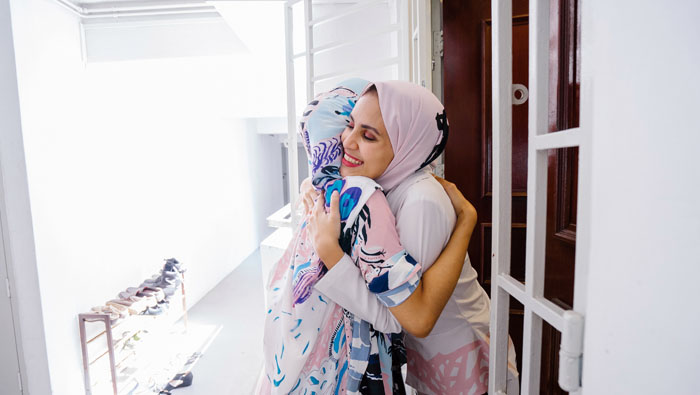
Muscat: Oman’s diversity will be on full display this Eid Al Fitr, as people across the Sultanate celebrate the biggest day of the year in their own traditional style.
From prayer to special dishes and traditional dances, Eid in Oman differs from place to place, making every celebration unique. Times of Oman asked people across Oman to tell us what Eid in their area was like and the answers were a thrilling example of the Sultanate’s rich, multi-cultural diversity.
Dhofar
All the way down south in Dhofar, preparations begin before Eid itself. Isra Ba Oqba said, “In Dhofar, we cook a meal called ‘Al Majeen’ the day before Eid so that it will be ready to be shared with guests who visit us the next day. We always present it alongside desserts and pastries.” Al Majeen is made from strips of meat that have been dried in the sun for a day or more.
Oqba added, “The most important part of Eid begins after the men return from the prayer. We greet and wish each other a blessed Eid before going out to visit our neighbours. After that, the men take the children on visits to all the houses of their tribe. The women, on the other hand, during the first day, gather in the house of the father or grandfather. With visits to relatives, Eid can last a week or more.”
Musandam
“We don’t have a special meal for Eid in Musandam. We offer sweets, rice and grape leaves to the guests,” Kholoud Al Kahmzari told the Times of Oman. Usually, on the first day of Eid, the entire family gathers in what we call a ‘big house’, which is usually the house of my grandfather and grandmother. There, we meet up with all our uncles and aunts and their children before going back home,” he added.
North Al Batinah
Said Al Badi from Al Batinah described how the men in wilayat Saham celebrate Eid. “Our celebrations last three days. On the first day, everyone gathers for Eid prayers early in the morning, after that men head to gathering halls such as a ‘majlis’ or ‘sabla’ where we eat traditional foods such as ‘harees’, ‘thareed’, and different sweets. After that, everyone heads out to visit their families and neighbours. We normally start during lunch time and continue into the evening.”
“On the second day, we meet family again for lunch and dinner. Throughout the three days, we eat rice and meat for lunch, while for dinner we have bread with either 'mishkak' or 'mqalaiy'. Like many other parts of Oman, we have 'shuwa' on the third day,” said Al Badi.
“Halwa, Omani coffee, and Shuwa are all a must during Eid. In my village, we prepare the shuwa by placing the mutton or beef into a hole on the first day after Dhuhr or Asr prayers, as the meat needs one-to-two days to cook,” he added.
Al Sharqiyah South
In the South Al Sharqiyah province, traditions widely vary from town to town.
Haitham Al Arimi, an Omani from Jalan Bani Bu Ali, said, “Our special Eid meal in Jalan is ‘arseia mixed with meat’. We usually eat it early in the morning. Then we start visiting our relatives and neighbours.”
“Additionally, we also hold horse shows and shooting competitions on the second or third day of Eid alongside traditional dances,” Al Arimi added.
Residents from Sur, on the other hand, prefer a more musical approach to their Eid festivities.
Abdullah Darwishi, a native of Sur, said, “On Eid, we perform all our traditional dances including the ‘razha’ and ‘masendo’.”
“We usually begin with a ‘razha’ after the Eid prayer. Then, after Asr, we perform another traditional dance using the masendo drums. The latter is sometimes done every day of Eid at the same time, after the asr prayer. We do not eat anything specific. What makes our Eid unique are the traditional dances that we perform, which are mostly specific to Sur,” he added.
Adh Dhahirah
Like many of his fellow Omanis, Ibri-resident Ahmed Al Hatimi feels Eid is the best time to visit family and friends.
“On the first day of Eid, we go to the mosque for prayers and then we exchange greetings,” he said.
Al Hatimi added that they gather like many others in the wilayat at the village Majlis, drinking Omani coffee with Omani halwa.
“After that we go to all the houses in the villages to visit relatives, the elderly and people who are sick to share our happiness with them. It’s great because it strengthens the ties that bind the entire village together,” he said.
In some parts of Ibri, folklore songs and traditional dancing add fanfare to the Eid celebrations.
“We start slaughtering animals on the first or second day of Eid. On the third day, we prepare mishkak, a traditional Omani dish made by grilling pieces of beef, mutton or chicken,” said Al Hatimi.
Muscat
While many Omanis who live in Muscat travel back to their hometowns or villages for Eid, those who remain in the capital have their own set of traditions.
Many Omanis told the Times of Oman that they spent the first day visiting their families, while on the second day they prepared shuwa and often ate it at farms. While some preferred a quiet third day of Eid, others usually spent the entire day with family.